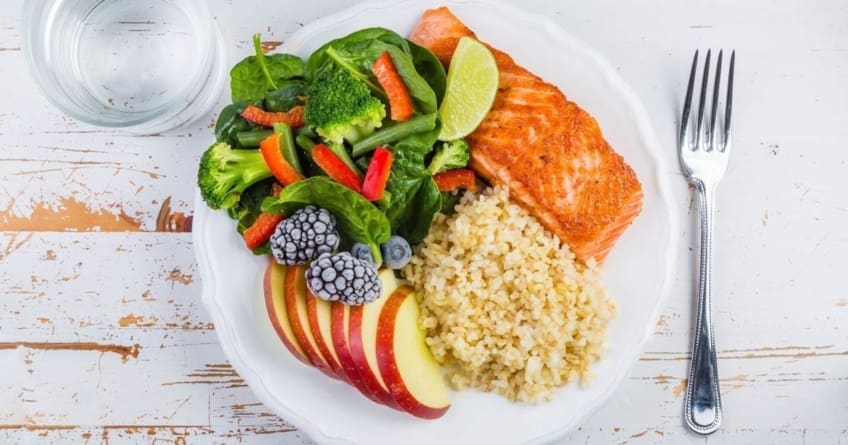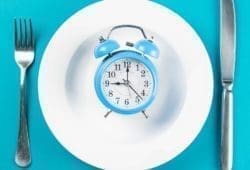
People have different calorie needs based on their gender, age, and level of activity. Review the chart below to get an idea, then talk to your doctor.
Path to improved health
The following chart will help you determine your daily calorie needs. Calculate your range based on your gender, age, and level of activity. Keep in mind that these are estimates based on average heights and weights. Also, your calorie needs may vary at times, such as while women are pregnant or breastfeeding.
| Gender | Age (years) | Inactive | Moderately Active | Active |
| Female | 2-3 | 1,000 | 1,000-1,200 | 1,000-1,400 |
| 4-7 | 1,200 | 1,400-1,600 | 1,400-1,800 | |
| 8-10 | 1,400 | 1,600-1,800 | 1,800-2,000 | |
| 11-13 | 1,600 | 1,800-2,000 | 2,000-2,200 | |
| 14-18 | 1,800 | 2,000 | 2,400 | |
| 19-25 | 2,000 | 2,200 | 2,400 | |
| 26-50 | 1,800 | 2,000 | 2,200-2,400 | |
| 51+ | 1,600 | 1,800 | 2,000-2,200 | |
| Male | 2-3 | 1,000 | 1,000-1,400 | 1,000-1,400 |
| 4-5 | 1,200 | 1,400 | 1,600 | |
| 6-8 | 1,400 | 1,600 | 1,800-2,000 | |
| 9-12 | 1,600-1,800 | 1,800-2,200 | 2,000-2,400 | |
| 13-15 | 2,000-2,200 | 2,200-2,600 | 2,600-3,000 | |
| 16-18 | 2,400 | 2,800 | 3,200 | |
| 19-20 | 2,600 | 2,800 | 3,000 | |
| 21-40 | 2,400 | 2,600-2,800 | 2,800-3,000 | |
| 41-60 | 2,200 | 2,400-2,600 | 2,600-2,800 | |
| 61+ | 2,000 | 2,200-2,400 | 2,400-2,600 |
Source: 2020-2025 Dietary Guidelines for Americans.
An inactive person gets light day-to-day physical activity (1,000 to 3,000 steps). A moderately active person walks about 1.5 to 3 miles per day (3,000 to 5,000 steps). An active person walks at least 3 miles per day (5,000 steps or more).
Things to consider
As you can see from the chart, children’s calorie needs increase with age. Adults need fewer calories once they reach a certain age. In fact, we often have lower calorie needs than we think. If you are trying to lose weight, you’ll want to consume even fewer calories.
The U.S. Department of Agriculture’s MyPlate page has tips and information for eating healthy at all stages of life.
Consider using a calorie counter or journal. These tools can help you meet your daily calorie needs. You should keep track of the calories you consume (eat) and expend (exercise). When you’re counting calories, watch what you drink. Drinks with sugar add unneeded calories to your diet. This includes soda, fruit juices, sports and energy drinks, and some alcohol. Instead, drink water, unsweetened tea, or low-fat milk.
Also remember that all calories are not equal. If you are trying to lose weight by cutting calories, filling up on carbohydrate calories with no fat or protein is not the best solution. Calories from healthy fats and proteins will keep you fuller longer. These types of foods are more calorie dense, so you will need to pay attention to serving sizes.
Be sure to check nutrition labels to see how many calories are in one serving. Most restaurants offer nutritional information on their menus or online.
Talk with your family doctor or a dietitian if you have questions about your diet. They can help you define calorie counts and healthy eating plans for you and your family.
Questions to ask your doctor
- Do my calorie needs depend on the type of diet I’m on, like vegetarian or low-carb?
- Do my calorie needs change if I’m pregnant or breastfeeding?
Resources
U.S. Department of Agriculture: Calculators and Counters
U.S. Department of Health and Human Services: Dietary Guidelines for Americans
U.S. Department of Agriculture: MyPlate
![]()
Copyright © American Academy of Family Physicians
This information provides a general overview and may not apply to everyone. Talk to your family doctor to find out if this information applies to you and to get more information on this subject.











